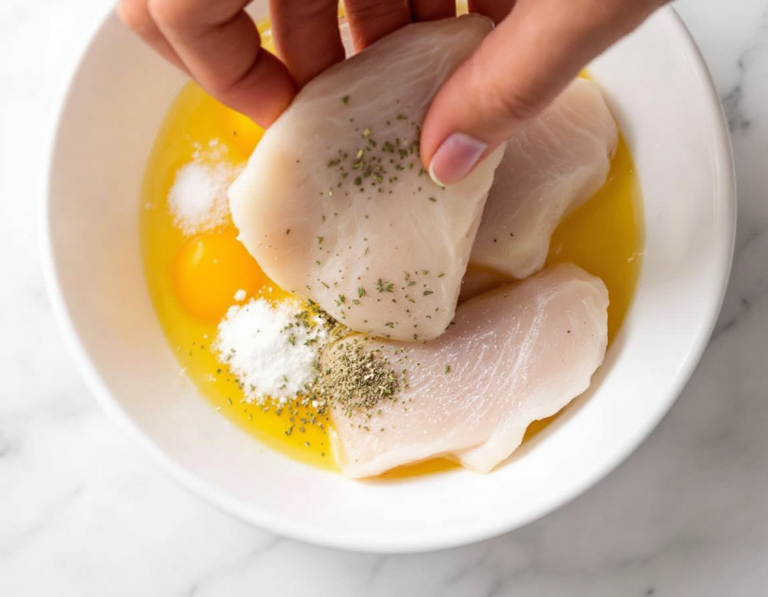
Ah, the quest for the perfect fried fish! I recall my first attempt at keto cooking—it was a culinary catastrophe of epic proportions. Yet, through trial and error, emerged this crispy revelation. With a golden crust that crackles with every bite, it’s a tantalizing triumph that even my carb-loving friends adore.
Steps
- In a shallow bowl, whisk together the egg, salt, pepper, garlic powder, and dried thyme. Dip each fish fillet into this egg mixture to evenly coat them.
- Place the fillets on a cutting board and sprinkle both sides with almond flour, pressing gently to ensure the flour adheres well.
- Pour avocado oil into a large nonstick frying pan to a depth of about ½ inch. Heat the oil over medium-high heat until hot, approximately 3-5 minutes.
- Carefully add the fish fillets to the pan, cooking them in batches if necessary. Fry each side until golden brown and crispy, about 3-4 minutes per side.
- Once cooked, serve the fish immediately for the best texture and flavor.

Ingredients
- Large eggs
- Kosher salt
- Black pepper
- Garlic powder
- Dried thyme
- Thin fillets of firm, white fish such as cod (½-inch-thick)
- Blanched, finely ground almond flour (¼ cup per fillet)
- Avocado oil (enough to reach about ½ inch high in the pan)
Nutritional Values
Calories: 1788 kcal | Carbohydrates: 24 g | Protein: 152 g | Fat: 120 g | Saturated Fat: 8 g | Sodium: 1712 mg | Fiber: 12 g
FAQ
- Can I bake the keto fried fish instead of frying it?
- Yes, you can bake the fish. Simply arrange the almond flour-coated fish pieces on a greased, parchment-lined baking sheet. Spray them generously with oil and bake at 400°F for about 10 minutes per side until crispy on the outside and fully cooked on the inside.
- How can I tell when the fish is fully cooked?
- The fish is considered done when it reaches an internal temperature of 145°F. The flesh should appear opaque and should easily flake apart with a fork.
- Should the fish be deep-fried for this recipe?
- Deep-frying isn’t necessary. Cooking the fish in a skillet with about half an inch of oil on both sides is enough to achieve a crispy texture.
- What’s the best way to store leftovers of this dish?
- Store any leftovers in an airtight container in the refrigerator for up to three days. To reheat, place them uncovered in a 350°F oven. It is not recommended to freeze the leftovers.
- Can I use a different oil or seasoning for this recipe?
- Yes, you can vary the recipe by using ghee instead of avocado oil, which also has a high smoke point and adds flavor. For seasonings, you might try using dried oregano or adding a pinch of onion powder or paprika.
Tips
- Use a nonstick skillet to prevent the almond flour coating from sticking to the pan. Stainless steel can work too, but there’s a higher chance of the coating sticking, even with plenty of oil.
- Instead of dredging, sprinkle the fish pieces with almond flour to avoid making the flour soggy and sticky, which often happens when you dredge.
- If you’re not keen on frying, you can bake the fish instead. Arrange the coated fish on a greased, parchment-lined baking sheet, spray with oil, and bake at 400°F for about 10 minutes per side until crispy.
- To ensure the fish is fully cooked, aim for an internal temperature of 145°F. The flesh should be opaque and easily flake apart with a fork.
Equipment
- Nonstick Skillet – Essential for cooking the fish without the coating sticking.
- Instant-Read Thermometer – Useful for checking the internal temperature of the fish to ensure it is fully cooked.
- High-Temperature Parchment Paper – If you choose to bake the fish as an alternative method.
